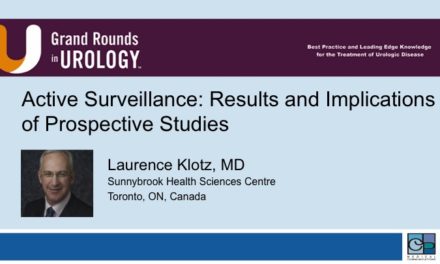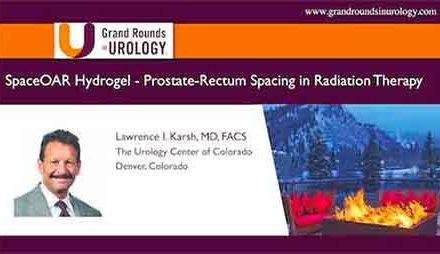Juanita M. Crook, MD, FRCPC, presented “A Biochemical Definition of Cure Following Brachytherapy of Prostate Cancer” as part of a course on Prostate Brachytherapy released in 2021 and created by the American Brachytherapy Society in partnership with Grand Rounds in Urology.
How to cite: Crook, Juanita M. “A Biochemical Definition of Cure Following Brachytherapy of Prostate Cancer.” September 2021. Accessed Jul 2024. https://grandroundsinurology.com/a-biochemical-definition-of-cure-following-brachytherapy-of-prostate-cancer/
A Biochemical Definition of Cure Following Brachytherapy of Prostate Cancer
As part of a special course on brachytherapy for prostate cancer from the American Brachytherapy Society (ABS) and Grand Rounds in Urology, Juanita M. Crook, MD, FRCPC, Professor of Radiation Oncology at the University of British Columbia in Kelowna, discusses the development of a biochemical definition of cure following low-dose-rate (LDR) prostate brachytherapy. She begins with some background, explaining that the interpretation of post-radiation PSA values has been challenging. She relates that the 1996 ASTRO consensus conference defined biochemical failure as 3 consecutive rises after the nadir with failure backdated to midway between the nadir and the first rise, while the 2005 Phoenix consensus conference defined biochemical failure as 2 ng/ml > nadir, a definition still widely used today. Dr. Crook emphasizes that neither definition was meant to be a trigger for intervention, and neither attempted to define cure. She then discusses research on the importance of PSA nadir in LDR brachytherapy which showed that if PSA at 4 years was less than 0.2 to 0.4 ng/ml, patients tended to do well, but if it was greater than 1.0, the majority were going to fail. Dr. Crook considers another study on long-term PSA stability after LDR brachytherapy which found that 86% of patients had stable PSA at a median followup of 89 months. She also briefly notes that a study of intermediate-risk patients undergoing external beam radiation therapy (EBRT) + high-dose-rate brachytherapy boost found similar results to the studies of LDR brachytherapy regarding the importance of PSA nadir. Dr. Crook then goes into detail about a study she and her colleagues conducted to define a biochemical definition of cure following LDR brachytherapy by identifying a PSA threshold value at an intermediate follow-up time that is associated with long-term (10-15 year) freedom from prostate cancer. She explains that by using prospectively-collected data sets combined from 7 institutions, she and her colleagues were able to determine that patients with a PSA ≤ 0.2 ng/ml by 4-5 years have a 99% probability of being free of clinical failure at 10-15 years. Dr. Crook concludes that PSA ≤ 0.2 ng/ml should be adopted as biochemical definition of cure for comparison with surgical series, but highlights that those patients not achieving this threshold PSA should not be considered as having “failed” but should continue to be monitored with the understanding that they are at higher risk of subsequent clinical failure.
For more on brachytherapy, check out the first module of the free Prostate Brachytherapy course from GRU and the American Brachytherapy Society.
ABOUT THE AUTHOR
Juanita M. Crook, MD, FRCPC, completed her medical training at the University of Toronto and her Residency in Radiation Oncology at Princess Margaret Hospital. She is currently a Professor of Radiation Oncology at the University of British Columbia in Kelowna. She is a radiation oncologist at the BC Cancer Agency Sindi Ahluwalia Hawkins Centre for the Southern Interior, also in Kelowna, where she has developed image-guided HDR gynecologic brachytherapy, US-planned HDR prostate brachytherapy, and permanent seed brachytherapy for breast cancer.
Previously a Professor of Radiation Oncology at the University of Toronto/University Health Network and Associate Professor at the University of Ottawa, she has a particular interest in intermittent androgen suppression, post-radiation prostate biopsies, and penile brachytherapy. She has written more than 20 book chapters and over 200 journal articles and is a frequent speaker at international meetings where she presents in English, French, and Spanish. She was Scientific Chair of the 2007 American Brachytherapy Society meeting and frequently teaches at the ABS Prostate Brachytherapy School. She is the Former President of the Board of the American Brachytherapy Society and the recipient of the Thom Shanahan Distinguished Brachytherapy Educator Award.



